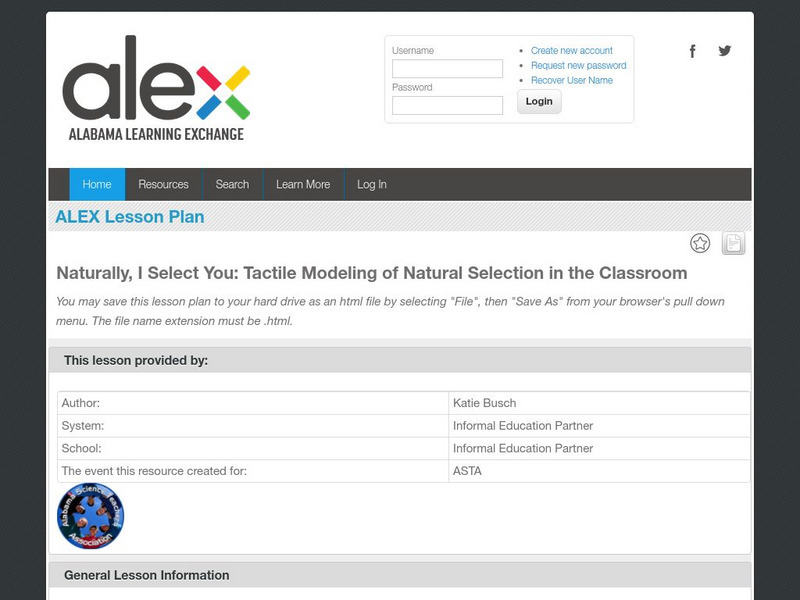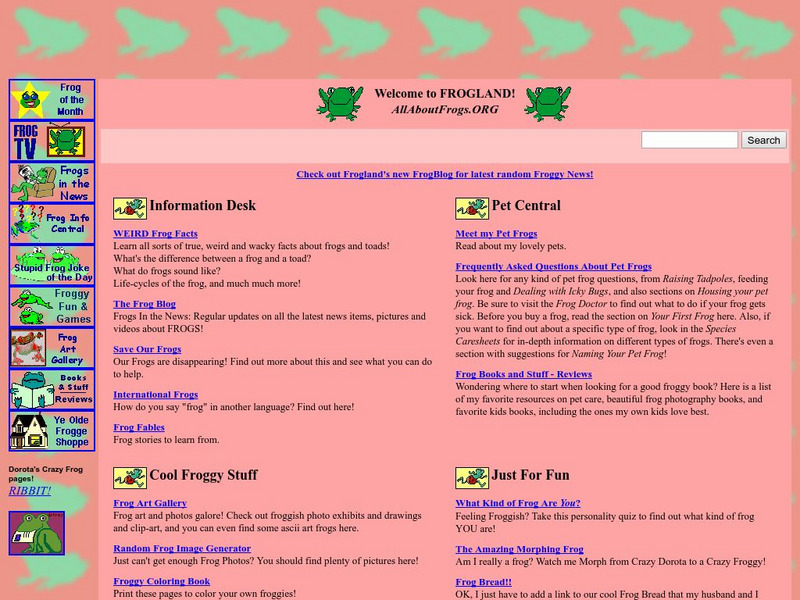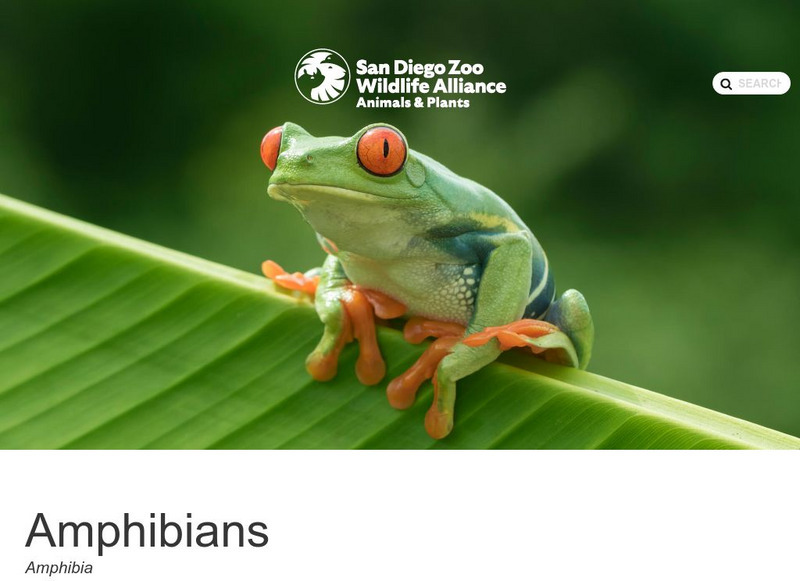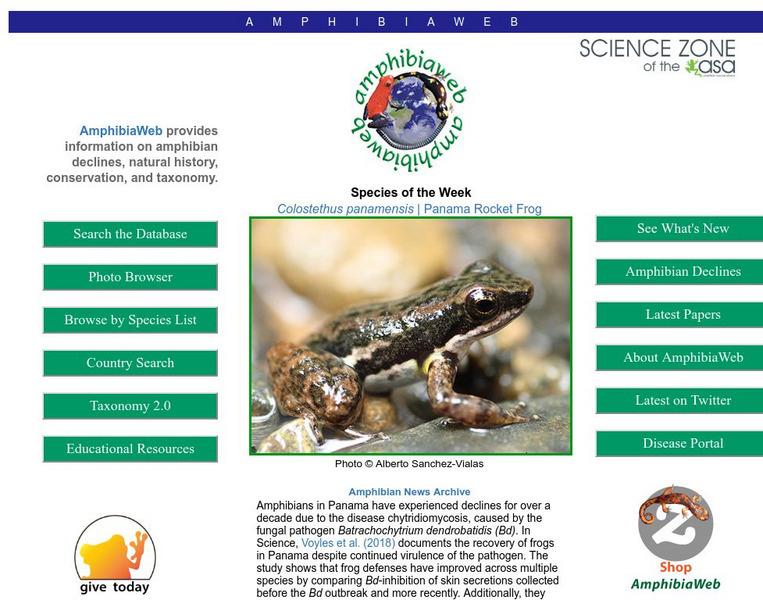Curated OER
Peanut Butter Broccoli
Fifth graders explore food production by viewing DNA presentations. For this genetic engineering lesson, 5th graders discuss the foods they typically eat at home and how many common foods are engineered in a way that can produce a bigger...
Curated OER
Rock, Paper, Scissors
Fifth graders explore genetic traits. In this genetic traits instructional activity, 5th graders investigate dominant and recessive traits. Students identify similar traits between a parent organism and its offspring.
Curated OER
Six Levels of Ecological Organization
Ninth graders describe the six levels of ecological organizations and give examples of each. They also differentiate between food chains and webs and identify trophic and consumer levels in food chain and food webs.
Scholastic
Scholastic News: Week of 7 21 14 : Can Frogs Fight Back?
Find out how scientists are working to increase the lifespan of frog populations that have been under attack by fungus.
Read Works
Read Works: Frogs at Risk
[Free Registration/Login Required] An informational text about frogs and toads in Ecuador that are at risk of dying out. A question sheet is available to help students build skills in reading comprehension.
PBS
Pbs Teachers:costa Rica: Why So Many Frogs?
Explore the different stages in the growth of a frog, explain why organisms produce large numbers of young and determine the survival rate of a population of tadpoles under controlled conditions.
Alabama Learning Exchange
Alex: Naturally, I Select You: Tactile Modeling of Natural Selection
In this simulation lesson, learners investigate the role of natural selection and survival within a frog population living in a changing environment. Includes student handouts along with an assessment piece.
Other
Blue Poison Dart Frog
The Blue Poison Dart Frog was not even discovered until 1968. This effective site describes the physical characteristics, diet, size, range, population status, and predators of this fascinating animal.
A-Z Animals
A Z Animals: Animal Facts: Poison Dart Frog (Dendrobatidae)
Provides photographs and a fact card about the poison dart frog. Discusses where they are found, physical characteristics, the many species, human uses of their poison, habitat, population status, diet, predators, and reproduction.
A-Z Animals
A Z Animals: Animal Facts: Pool Frog (Pelophylax Lessonae)
Provides photographs and a fact card about the pool frog. Discusses where they are found, habitat, physical characteristics, diet, predators, reproduction, and population status.
BSCS Science Learning
Bscs: Frog Eat Frog World
Using maps and graphs of large data sets collected in FrogWatch, middle schoolers will determine the range, preferred land cover, and proximity to water of the American bullfrog to figure out the bullfrog's requirements for food, water,...
University of Michigan
University of Michigan Critter Catalog: Frogs & Toads
This competent site provides general information about amphibians and then focuses on the amphibians found in southeastern Michigan. Information, pictures, sound clips, and classification groupings are provided.
National Health Museum
Access Excellence: Mystery Spot: Croak
Access Excellence provides this fictional interactive story that explores the possible reasons for a disappearing species of frogs. Follow the clues, and email your answer!
BBC
Bbc: Breeding Success for Lincolnshire's Natterjacks
Article explains efforts in England to help Natterjack toad populations grow through introducing populations from different parts of the country into depleted areas.
Other
Welcome to Frogland!
Frogland has fun and important information about frogs in the news, pet frogs, frogs in the wild, frog jokes, and more. Features include a section for teachers and parents.
Smithsonian Institution
Smithsonian National Zoo: Zoogoer Magazine: The Mystery of Amphibian Declines
Howard Youth's article, "Chasing Frogs and Phantoms: The Mystery of Amphibian Declines" deals with the shrinking populations of amphibians and certain conservation efforts underway.
Bagheera
Bagheera.com: Monteverde Golden Toad
The monteverde golden toad has not been seen since 1989 and is considered extinct by some scientists. This article describes what we know about the toad, but also discusses problems with amphibian populations as a whole. A major part of...
San Diego Zoo Global
San Diego Zoo: Amphibians
This resource offers extensive information about amphibians. Visitors can click on the listed amphibians for further information.
Sea World Parks & Entertainment
Sea World: Biodiversity
Depicts biodiversity with a brief narrative. Includes vocabulary, bibliography, and one activity. Subject matter at an upper intermediate grade level or higher.
Ducksters
Ducksters: Animals for Kids: Amphibians in Danger
Kids learn about the decline of the amphibian population. Why are they endangered and what is causing it.
University of California
Regents of the University of California: Amphibia Web
AmphibiaWeb, a site inspired by global amphibian declines, is an online system that allows free access to information on amphibian biology and conservation. This site is filled with amphibian facts, a glossary of terms, species numbers,...
















